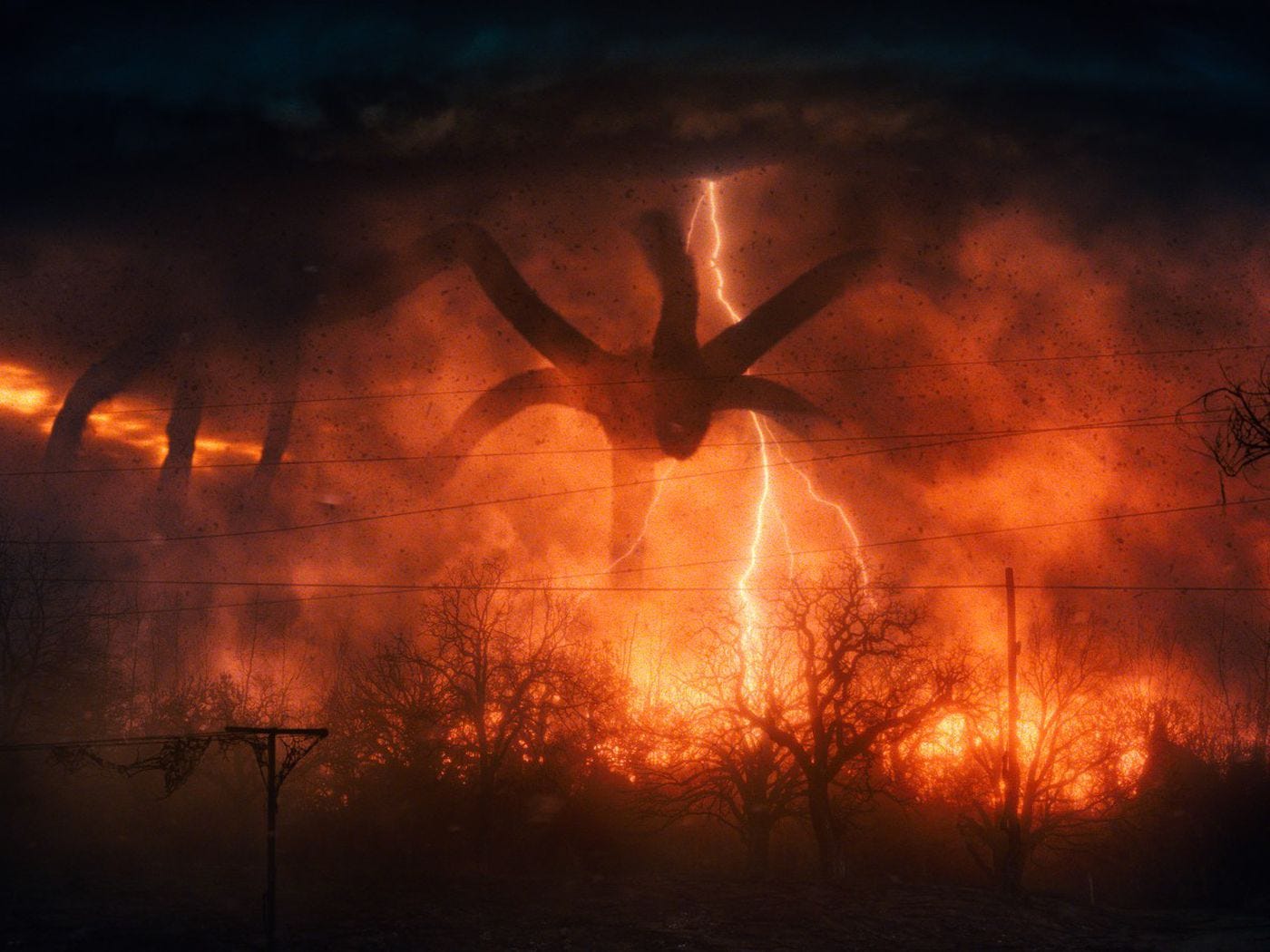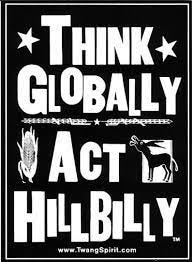(will return to ongoing themes of Techno-Utopianism and energy transitions in subsequent posts, but the recent Tucker Carlson-Putin interview and Trump’s NATO comments and backlash have resurfaced a bigger theme that’s really going to matter in the coming decade)
And that’s specifically the question of what the United States owes the world, and where does it find its deepest sources of strength at home?
This isn’t the first time we’ve asked ourselves this question. In fact, we’ve been asking it on and off since the founding of the nation.
The earliest version of this American debate was first articulated by Thomas Jefferson and Alexander Hamilton all the way back in the 1780’s.
It may seem odd to go back to these school book stories, but they’re all around us–especially in this election year.
–Especially as Americans deeply reconsider their role at home and in the wider world with Ukraine, Putin, Gaza, Taiwan and all else.
Understanding them gives us a skeleton key to making sense of our decisions, our commitments and our legacy.
***
Let’s take it from the top, and then we’ll get into all the weird ways this conversation has warped and mutated lately.
As the founding fathers kicked around all the ways democracy could die in darkness (#suckitWaPo) Jefferson was acutely aware of all of the political and economic entanglements of life in Europe became convinced that the path to preserving the purity of the American experiment lay in the ideal of the self-sufficient yeoman farmer.
Working his own land, providing for most of his needs. Neither serf nor king. Informed.Engaged. Independent.
Hamilton saw that as a naive pipe dream, and advocated instead for direct and deliberate engagement in markets, alliances, and trade.
Hamilton handily won the day, and from the 19th century through the 20th, American expansionism and internationalism drove global history.
But the dynamic tension between these two competing visions has never really gone away.
FDR channeled Jefferson as he resisted getting entangled in World War II (until Pearl Harbor forced the issue).
Eisenhower warned of Hamiltonian scope creep with his famous “military industrial complex” address.
The Back to the Land movement of the 1970’s dusted off Jeffersonian idealism and sought to reclaim American virtue through simple rural living (in those leaky fucking domes that Bucky Fuller hyped a generation on).
Reagan, a Hamiltonian for a new century, sought to advance U.S. interests by proxy wars in Central America and the Middle East.
Jefferson vs. HamiltonAmerican history has followed this Hegelian dialectic– oscillating between the two poles of self-reliance and global engagement.
One side has never prevailed totally, but the conversation has always moved forward, inch by inch, wrestling with the issues of the day.
But then, over the course of the past thirty years––both of those ideals got badly perverted.
Like the popular TV series Stranger Things, we have ended up in the Upside Down Amerika, a darker, more twisted shadow realm of our true potential.
Post NAFTA in the 1990’s, Hamiltonianism mutated into hypercapitalism and neoconservatism––globally integrated supply chains, offshore tax havens, multinational corporatism. Decades long wars.
We were promised abundance for all. We got a gutted middle class, historic concentrations of extreme wealth, and cheap t-shirts.
Neoconservatism took the notion of Just War and used it to project force around the world. The intention––of toppling despotic regimes to unleash a natural blossoming of free markets and democracy was never realized.
We ended up with a multi-front never ending War on Terror that has bankrupted the treasury, exhausted the military and eroded our good will around the world.
No wonder that over the last decade both the Occupy and MAGA Movements sprung up in open revolt. No wonder that internationally, Islamic movements and anti-American sentiment around are at an all time high.
Hamiltonianism in the Upside Down
At the same time, the American Melting Pot is fracturing. The ideal of a nation founded by immigrants, celebrating integration and upward mobility is under threat.
Formerly prominent white, Protestant “Middle Americans” are feeling intense disease caused by the overlapping demographic trends of the “browning” of America and global refugee and border crises.
Their way of life seems diminished and under threat from all sides.
Egged on by cynical conservative media, aging Middle Americans are cranking up the drawbridge and retreating into ethnonationalism.
America, for these people, is white, Christian, and native born. The rest of the world is dirty, corrupting and impure (see Jonathan Haidt’s excellent work on conservatism’s relationship to purity)
Jeffersonianism in the Upside Down
These days, foreign entanglements like NATO, WHO, IMF and the UN are increasingly suspected as a source of national weakness not strength.
In 2019, a White House official even went so far as to refute the famous “give us your tired, your poor, your huddled masses” poem on the Statue of Liberty and claim that America was only open to European immigrants who could pay for themselves.
If you squint, you can still see the barest outlines of Jeffersonianism in this retrenchment:
The world is corrupting. Our strength lies in our independence from outside forces. We must sever the ties that bind, and commit to the purity of our nation, under God,with liberty and justice for Us.
But it's jingoism, not patriotism. It’s based on fear of the Other, not trust in Ourselves.
And in a weird way, the Social Justice of the far Left echoes something similar. “The American Dream is a sham--cloaking patriarchy, privilege and oppression” they say, “so our best recourse is to dismantle the system and claim what is ours, the historically dispossessed.”
Whether it’s Fox news adherents chanting “build that wall” or campus protestors chanting “check your privilege”––the end result is the same––a dismantling of the Infinite Game in favor of a return to tribalism.
Politics may make strange bedfellows, but these meme-wars make even stranger ones.
Once seen through the lens of Finite (win-lose) vs. Infinite Games (win-win)––we realize that mortal enemies like Social Justice Warriors and alt-Right Twitter trolls––are actually playing on the same team, united by their rejection of the Enlightenment project, and their desire to tear down the American experiment.
And here’s the thing that’s really easy to overlook:
This is isn’t a fair fight––it’s asymmetrical memetic warfare.
Adherents of the Infinite Game––extending care and concern to all people regardless of race, color, creed (or politics)––are supporting a fragile project that goes against millions of years of evolution and thousands of years of history.
Evolutionary biologists remind us that any aspirational society we try to build rests on the deeply encoded foundation of natural selection––i.e. the preservation of self and tribe.
Adherents of tribalism––both far Left and alt-Right have entropy, the Second Law of Thermodynamics, on their side. They are following Robespierre’s maxim “to make an omelet you have to break a few eggs.”
Under stress, we revert back down to fear-based tribalism. We bond by scapegoating the Other. We survive by marshaling limited resources to our own clan and kin.
All the Finite players have to do to “win” is to emphasize and widen the fault lines that go down to our foundations as tribal primates.
Smash all the eggs you can grab. Never mind the omelets.
Adherents of the Infinite Game on the other hand, can’t win by breaking eggs better or faster than the tribalists. They’re doing the exact opposite––trying to “put Humpty Dumpty back together again.”
It’s painstaking, delicate, impossibly complicated work, easily prone to failure and collapse. Its goals lie in direct opposition to the laws of evolution and physics.
It tries to create order (and compassion and inclusion) out of entropy. It is an exponentially harder task.
And like any propagandist knows, the job of misinformation is never to replace the Truth with a lie. That’s far too much effort. The job is simply to confuse the notion of Truth so much that the people give up looking for it.
So how do we rescue Amerika from the Upside Down?
And how can we do that without further activating the intense polarization currently splitting the country?
The simplest place to start is by dusting off and reclaiming the Jeffersonian/Hamiltonian dialectic from the darker forces that have co-opted both.
How, for instance, might we update Jefferson’s ideal of the yeoman farmer, and affirm the centrality of inclusive community self sufficiency?
Energy independence. Community supported agriculture. Barn raisings. Volunteer fire departments.
Community led Public Safety Officers. Parades and
Public libraries. Local disaster relief efforts (“we live here, we give here”). Skilled labor and craftsmanship.
Community arts.
We have a long and distinguished history of these kind of communal values––and their memories run deep. We can dust them off, highlight successes, and remind citizens of how “we” have always done things.
(see the “Don’t Mess with Texas” anti-litter campaign as a great example of deliberately harnessing cultural identity with civic agenda).
This kind of local resilience will become increasingly essential as federal budgets and responsiveness become overwhelmed with successive crises.
It’s time to replace the suburban fragmentation epitomized by the book Bowling Alone with local community bonds of “we’re in this together.”
How can we affirm Hamilton’s key insight, more not less true over the past three centuries––that we cannot simply isolate ourselves off from the globe?
How might we fully live into and up to America’s role as “leader of the free world?”
Most simply, how can we uphold and support our humanitarian role providing aid, technology, support of human rights and democracy to the most vulnerable and at risk around the world?
How can we take the lead on climactic and epidemiological threats that span all political borders and defy piecemeal solutions?
And while many transnational institutions are mired in bureaucracy, they still play an essential role counterbalancing raw power, corruption and violence in the developing world and the amoral decision making of multinational corporations.
We need to clarify and strengthen our commitments, not abandon them. The best solution to refugee crises isn’t to build better walls on our border, it’s to solve the problems that forced people from their homes in the first place.
The best solution to the collapse of international ecosystems isn’t to grab what’s left first––it’s to restore resilience to the Commons.
The well known bumper sticker “Think Globally (Hamilton) act locally (Jefferson)” sums up the polarity best.
We need to promote this concept beyond the Subarus and Teslas in the Whole Foods parking lot––to Born Again Patriots who see in it a shared American Legacy.
The hypothesis of the American Experiment––that all humanity is entitled to a fair shot at the Good Life––remains one of the most aspirational goals ever to make the leap from philosophical treatises into the material world of governance and civic life.
And it is at greater risk of failure today than at any time since 1860.
We don’t need a mom and apple pie whitewash of our American legacy, but we shouldn’t trample it in frustration for all the ways it (and we) have fallen short, either.
It is way harder to build something better from scratch in times of cascading threats than it is to repair what we’ve already got.
What we need at this late date, isn’t an aspirational appeal to global centric consciousness and inclusivity at a time of degrading existential conditions…
What we need is actually healthy regression towards the noblest expressions of tribalism we have available––and that most likely lies in doubling down on American Patriotism and the Enlightenment ideals.








Jamie, thank you for this cogent piece. Jefferson actually articulated a concrete vision for America as what he called A Commonwealth of Ward Republics (after the model of the decentralized, New England Township). It was opposed by Madison and Hamilton (argued mostly from Federalist Paper #10 and the fear of factions) who made the case for strong centralized federal government.
The amazing thing about Jefferson's vision is that it was a parallel one (more than 100 years earlier) to Mahatma Gandhi's vision for what he called a Commonwealth of Village Republics, or Sarvodaya. Gandhi's vision has already been implemented in Sri Lanka with the 65 year-old Sarvodaya Shramadana movement who have demonstrated that a horizontal network of 5,000 bioregional ecosystem networks (where ALL people can come together beyond any polarization) is doable.
The thing I have noticed about modern prescriptions for what ails us does not include reference to historical solutions. Many moderns and postmoderns seem to focus on the problems and not acknowledge the historical basis for all inclusive and comprehensive visions AND actual movements that give us a template so that we don't need too reinvent the wheel (no pun intended:_)
Add to this mix of solutions the Parallel Polis movements of Vaclav Benda in Czech in the 1970's and the Albanian parallel society movement in Kosovo in the 1990's that show how people can come together to build parallel society and economy movements.
I have launched a public conversation and campaign about building what I call symbiotic culture and a modern version of parallel society movements that focus on shared virtues in action - building local community networks around shared common needs such as around local food, energy, education, neighborhoods, spiritual and cultural needs, etc.
t seems like it is time for rolling up our sleeves and getting to the work of building such an alternative, beyond the battlefield of politics and religion, creating a new playing field where we can all benefit.
I am sharing that through posts and my recent book release here on Substack.
Would you join me in such a conversation?
It may be Nature that begins to define the outcome here with a bio regionalism that recognizes the “commons” we all share while being “hillbillies” in our own hollers and watersheds. Always appreciate your lucid overviews Jamie, so damn refreshing - thank you. I wonder if our flags - like our Stars and Stripes - could begin to symbolize less about our military and more about our commitment to a reset on our values invited above. A “greening” that acknowledges our reverence above all to future generations. Indigenous people figured some of that out. Making more room to listen…